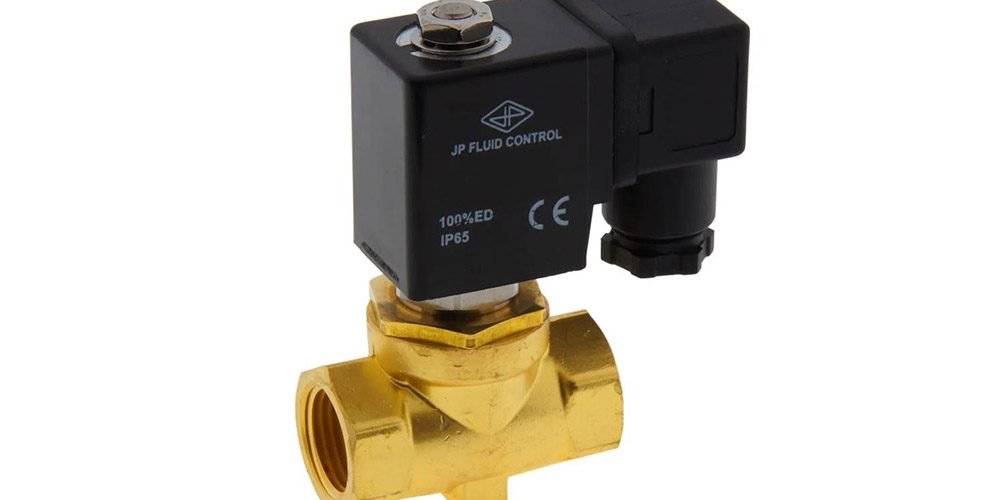Solenoid valves play a crucial role in fluid control systems, managing the flow of liquids and gases in applications from industrial machines to home appliances. These electro-mechanical devices come in various types, each designed to serve specific purposes. This article explores the different types of solenoid valves and delves into how they function, offering a comprehensive guide to help you better understand these essential components of modern engineering.
Table of Contents
What Is a Solenoid Valve?
A solenoid valve is a device that controls the flow of fluids, typically liquids or gasses, by using an electromagnetic coil to actuate a mechanical valve. It works on the principle that applying an electrical current to the coil generates a magnetic field, which, in turn, causes a mechanical element (usually a plunger or poppet) to move and open or close the valve. Solenoid valves are popular in various applications, from controlling water flow in household appliances like washing machines and dishwashers to managing the flow of gases in industrial machines and medical devices.
Circuit Functions
Solenoid valves are classified into two primary circuit functions: 2-way and 3-way. Understanding these functions is essential for selecting the right valve for a specific application.
- 2-way Solenoid Valves: A 2-way solenoid valve has two ports – an inlet and an outlet. It is used to control the on-off flow of fluids in a system. When the solenoid is energized (current applied to the coil), it opens the valve, allowing the fluid to pass from the inlet to the outlet. The valve closes when the solenoid is de-energized (current removed from the coil), blocking the fluid flow. This simple on-off operation is ideal for applications where precise control over the fluid is not necessary.
- 3-way Solenoid Valves: A 3-way solenoid valve, on the other hand, has three ports – an inlet, an outlet, and an exhaust. This type of valve diverts or mixes fluids within a system. There are different configurations of 3-way valves, including normally closed (NC) and normally open (NO). In a 3-way NC valve, when the solenoid is de-energized, the inlet is connected to the exhaust, blocking fluid flow from the inlet to the outlet. When the solenoid is energized, the inlet connects to the outlet, allowing fluid flow. In a 3-way NO valve, it’s the opposite – when de-energized, the inlet connects to the outlet, and when energized, the inlet connects to the exhaust.
Solenoid Valve Types
Solenoid valves can also be categorized based on their resting state and operation. The primary types are normally closed (NC), normally open (NO), and bistable.
- Normally Closed (NC) Solenoid Valves: NC solenoid valves block fluid flow in their default state (when not energized). When an electrical current is applied to the coil, it opens, allowing fluid to pass. These are commonly used in applications where safety is paramount since any power loss results in the valve closing and preventing the flow of fluids.
- Normally Open (NO) Solenoid Valves: NO solenoid valves allow fluid to flow in their default state (when not energized). When the coil is energized, it closes, blocking the fluid flow. These are useful in applications where continuous fluid flow is the default state, and the valve is closed only when needed.
- Bistable Solenoid Valves: Bistable solenoid valves don’t consume continuous power to keep the valve open or closed, making them energy-efficient. They have two stable positions, and changing the state requires a pulse of electrical current. These valves are often used in applications where power consumption is a concern.
Direct, Indirect, and Semi-Direct Operation
In addition to the aforementioned classifications, solenoid valves can also be categorized based on their method of operation: direct, indirect, and semi-direct.
- Direct-acting Solenoid Valves: The solenoid coil is directly connected to the valve mechanism in direct-acting solenoid valves. When energized, the coil directly lifts the plunger or opens the valve, allowing fluid to pass. These valves are typically used in applications with lower flow rates and pressures.
- Indirect-acting Solenoid Valves: Indirect-acting solenoid valves have a small pilot valve within the main valve. When the solenoid coil is energized, it opens the pilot valve, allowing the main valve to open. These valves are suitable for high-pressure and high-flow applications.
- Semi-Direct Solenoid Valves: Semi-direct solenoid valves combine direct and indirect operation elements. They have a diaphragm that separates the main valve from the solenoid coil. When energized, the coil opens the diaphragm, allowing the fluid to flow through the main valve. Semi-direct solenoid valves balance direct and indirect types, making them versatile for various applications.
Conclusion
Solenoid valves are a versatile and reliable type of valve used in various applications. They are available in various sizes, port configurations, and types to meet the specific needs of each application. When selecting a solenoid valve, it is important to consider the fluid type, pressure, flow rate, port configuration, and voltage. Solenoid valves require very little maintenance, but inspecting the valve periodically for signs of wear or damage is important.





